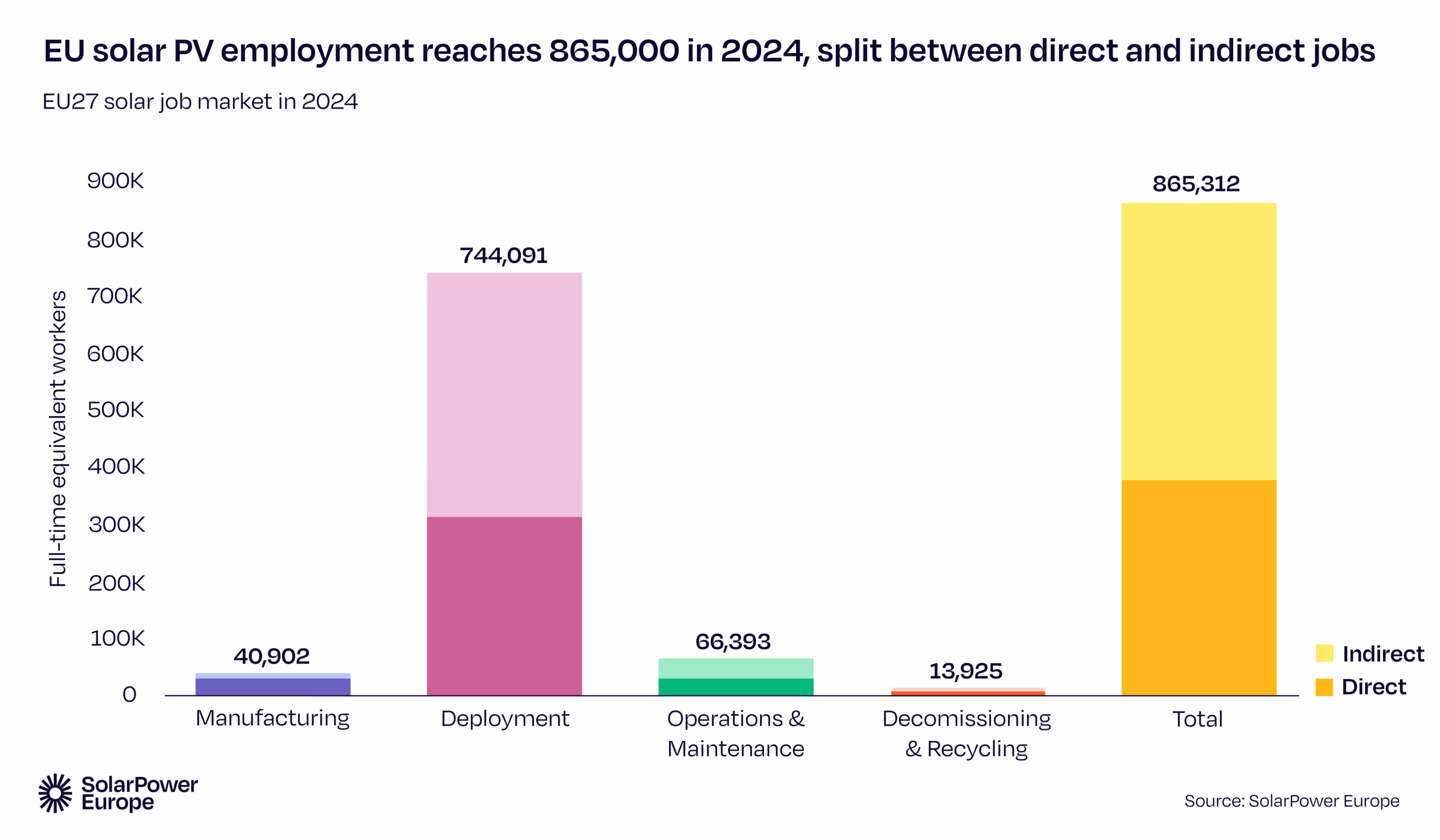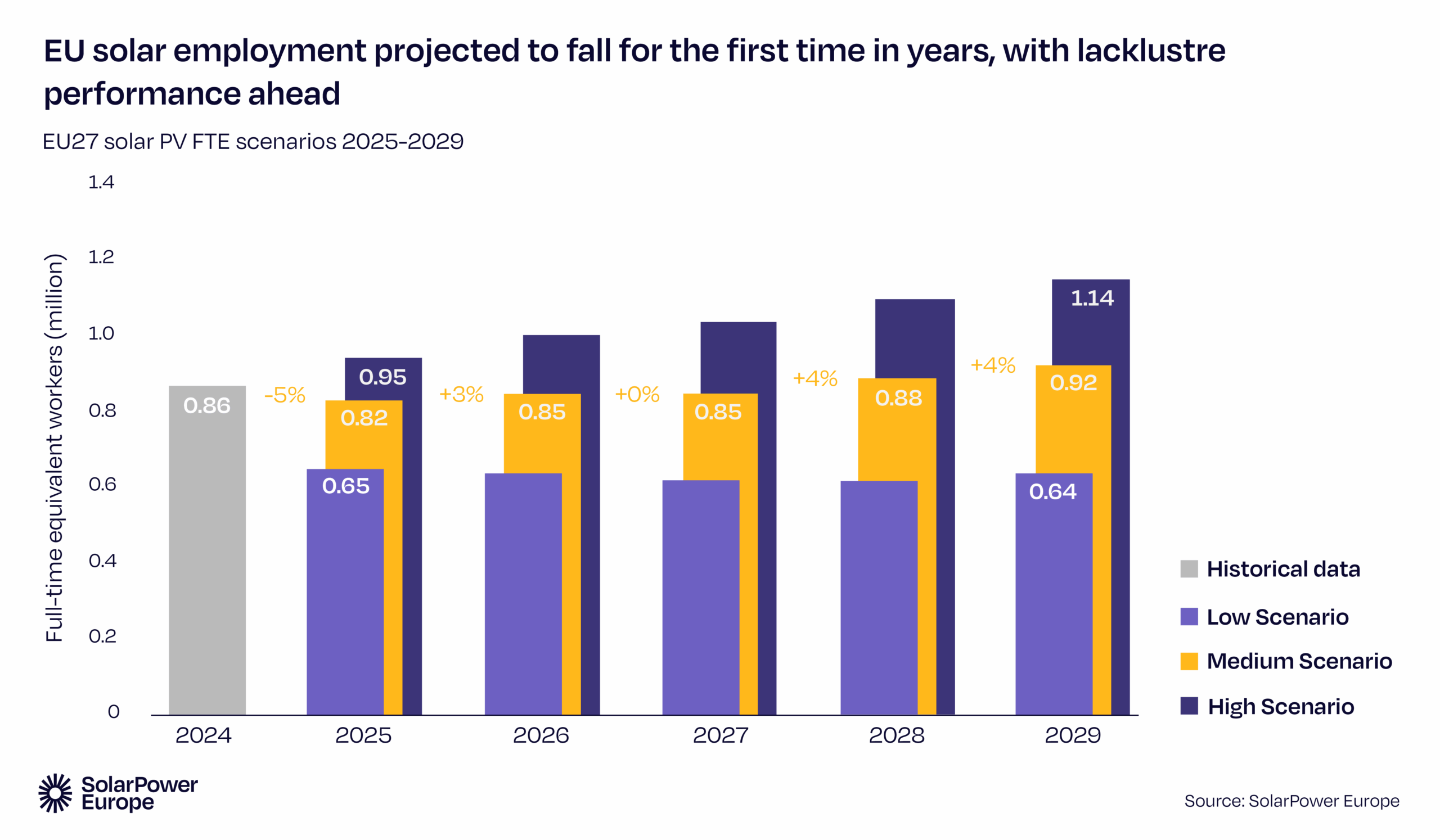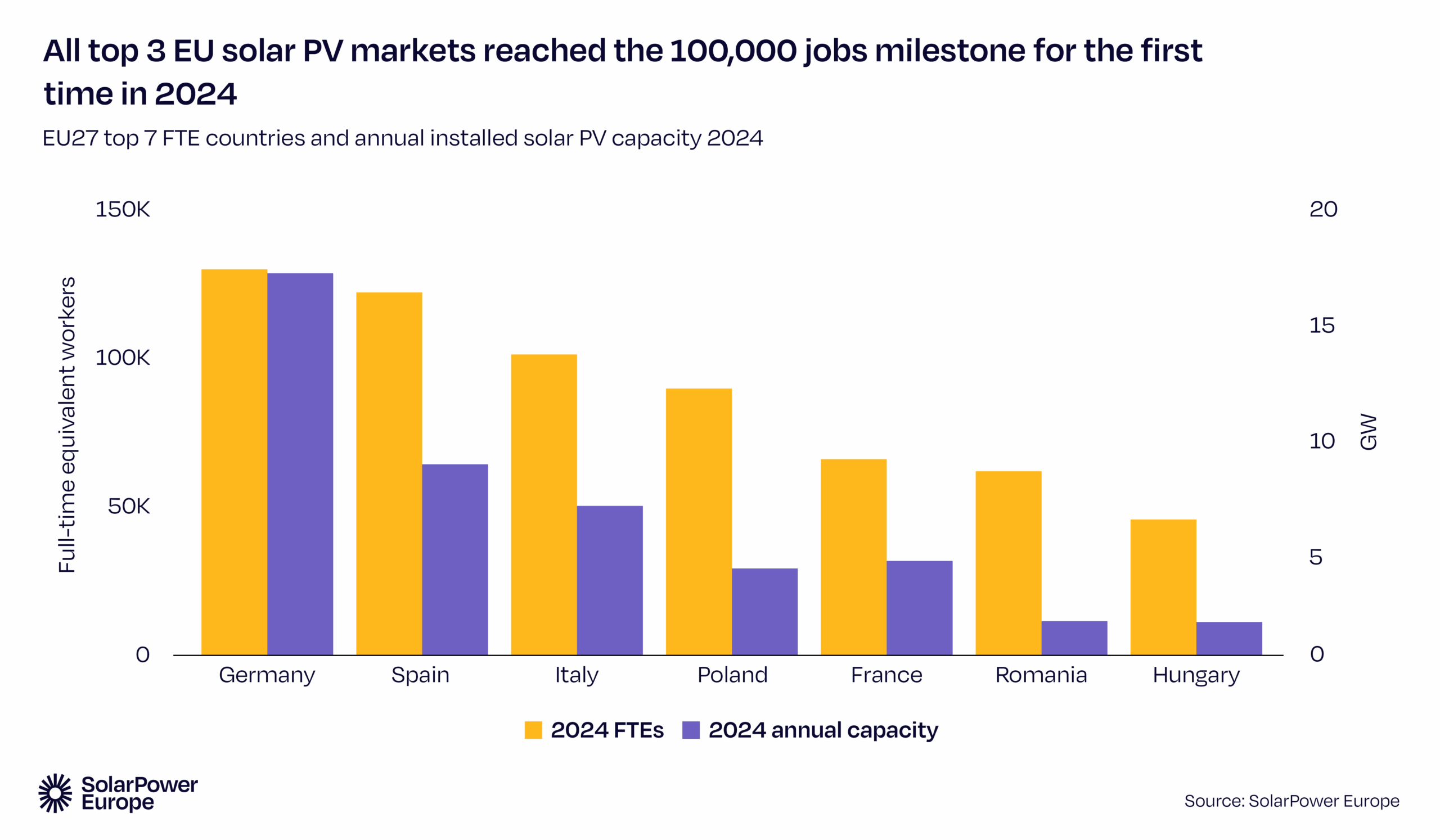Europe’s green job expansion continues with EU solar jobs rising to a record high of 865,000 in 2024. The sector’s 5% increase outperforms the wider EU labour market’s 0.8% growth.* Most jobs, 86%, are provided by the solar deployment sector.

Nevertheless, EU solar employment growth will face a temporary slowdown in 2025, with a 5% decline to 825,000 jobs due to slower solar deployment and manufacturing challenges. The EU solar workforce is expected to grow over the coming years and reach 916,000 jobs by 2029.

Walburga Hemetsberger, CEO of SolarPower Europe (she/her) said: “In 2025, solar delivers 825,000 quality jobs for Europe. That is incredible. However, this falls short of the 1 million solar job mark we were hoping to reach by now, and for the first time in a decade, solar jobs growth has halted. We can’t ignore this warning. EU leaders have the opportunity to reverse course, stabilise the market, support EU solar manufacturers, and strengthen its skills strategy.”
The disruption to solar workforce growth in 2025 is caused by a slowdown in residential solar, with energy crisis impacts easing and inadequate levels of system flexibility remaining. The EU rooftop solar workforce has been shrinking for the last 3 years, from 73% in 2022, to 59% in 2024, and is projected to fall to 56% in 2029.
Accordingly, the annual EU Solar Jobs Report has revised last year’s projection that the EU would reach 1 million solar jobs by 2027, with this now only likely achievable from 2030 onwards.

At national level, there has been movement. Despite a 17% decrease in Germany’s solar workforce from 2023 to 2024, the country holds the title of the EU’s largest solar employer with 128,000 jobs. Poland, previously the country with the second largest solar workforce, fell to fourth place with around 90,000 as its job-intensive residential rooftop market decreased. Spain ranks second with 122,000 solar workers, with the country prioritising its less job-intensive utility-scale sector which delivers more GW capacity with fewer workers. Italy, currently in third place, is expected to overtake Spain by 2029, supported by a steady market growth and a greater focus on utility-scale solar projects. To keep the solar workforce on track to drive Europe’s decarbonisation goals, the EU Solar Jobs Report proposes a set of policy recommendations:
- Establish a European Solar Skills Intelligence Hub.
- Scale and stabilise funding for renewable skills, with simplified access for small and medium-sized enterprises (SMEs).
- Map existing skills initiatives.
- Conclude sectoral agreements to enable large-scale retraining.
- Run coordinated campaigns to improve the attractiveness of technical green careers as well as apprenticeships and vocational trainings.
- Promote gender balance and diversity in solar careers.
- Develop cross-renewable career pathways and portable competence frameworks.
- Introduce a European Solar Skills Passport.
- Adopt an electrification-skills strategy that links solar PV to heat, mobility and storage.
- Invest in advanced digital and artificial intelligence (AI) trainings.
*Source: Eurostat






























